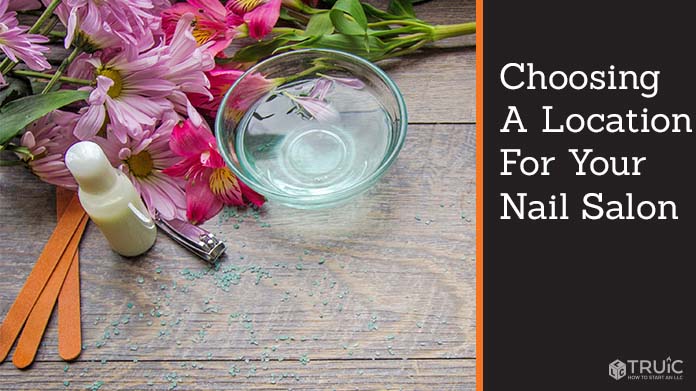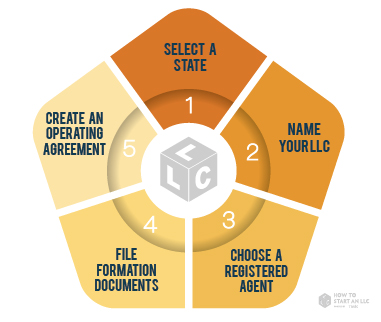Choosing a Location for a Nail Salon
Once you decide to start a nail salon business and finish mapping out your business plan, one of your biggest — and most vital — decisions involves the location of your shop. Because you’re now in the planning stages and need to secure a location for your business, this decision will become foundational to your salon’s style and image. Consider what type of clientele and reputation you want to foster from the start. If you've ruled out your home or a mobile solution, it’s time to scout out a physical location. But, where do you begin?

Location Considerations
Choosing the right location for your business can seem like a daunting task. Should you invest in a freestanding building, in a shopping center or strip mall, or in a shopping mall? Which location most closely fits both your current and future needs? Is a former salon space currently up for grabs? If so, why did that business close its doors?
While this is, arguably, one of the most critical business decisions you’ll make, it can be fun and exciting. By breaking it down into the six key components outlined below, you can begin the process and make selecting a location an enjoyable experience.
Rent vs. Own
Here’s the first question you must answer: Is it better to rent or own the property in which you’ll operate your nail salon? Both options come with their own set of benefits and drawbacks.
Operating in a freestanding building you own offers greater visibility within the community, making it the popular choice for many salon owners. Owning your own space also helps lock in your expenses at a fixed rate, ensures more freedom when renovating the location, and offers tax deductions that can help minimize business expenses. In addition, the equity in your commercial building can provide an excellent source of income if (or when) you decide to retire. Entrepreneurs considering this option face higher upfront expenses, however, so should carefully consider their long-term goals to ensure they don’t outgrow the space a few years down the road.
With so many uncertainties associated with launching a new business, many entrepreneurs opt to rent their new workspace. Leasing broadens your pool of options, giving you the opportunity to operate on a prime piece of real estate with an already established public image. In addition to freeing up a great deal of working capital, renting also frees you from the challenges many property owners face. Business owners choosing this route should carefully review all lease agreements because many come with hidden costs, such as maintenance and marketing fees. Because you won’t build equity while renting and you’ll be limited to cosmetic and structural changes, make sure to lease a space that requires little to no build-out.
Demographics and Community
When drafting your business plan, you defined the type of salon you plan to open and the target audience you want to entice. Now, it’s time to put that information to work for you. In searching for that perfect salon location, you’ll need to conduct some market research. This involves consideration of the type of people who live within — or frequent — the area as well as the average family incomes, which often can influence your customers’ spending habits.
While part of your client base will include regular customers willing to travel for your services, a successful business doesn’t rely solely on those clients. If your business plan targets a younger audience, you’ll need a space in the heart of the city. Alternately, a location in the suburbs might be ideal for an older, more mature audience. Here’s a great rule of thumb to follow: Pay close attention to the anchor stores in the locations you’re considering. A salon offering health-conscious options, for example, will find greater success operating near a Whole Foods Market or a Trader Joe’s store.
Traffic and Visibility
Walk-in customers tend to be a large part of any nail salon’s business — particularly in the first few years. That makes it especially important to select a visible and easily accessible location.
When weighing the pros and cons of each potential location, make sure to note what kind of foot traffic it has as well as how much. Is the space located in a busy intersection or shopping center? What times of the day is the area busy? How easy would it be for a prospective customer to pop in for a quick appointment? A business tucked away in the corner of a strip mall is less likely to attract customers than one with a prominent location all passersby can see.
Parking
How many times have you abandoned a shopping mission without getting what you need simply because you couldn’t find a parking space? While parking may seem like an obvious consideration, many entrepreneurs fail to assess it when scouting business locations. Ensuring your clients have safe, free, and easy parking is critical to your new business’ success.
First, determine how many parking spaces your business will need on a busy day. While this type of business has a fairly quick turnover, a full house means you need enough parking for customers both coming and going. Next, take a look at the other businesses that occupy the buildings surrounding the location. What are their parking needs on a typical day? Does the area have street parking to help with any overflow? Importantly, remember to look for ample lighting because many salons have extended hours to meet the needs of their clientele.
Competition
Your business plan called for you to identify the local competition; now it’s time to examine this in more detail. When scouting out a location, try to determine which areas of town lack the services you plan to offer. If other salons already operate in an area you like, do some research and find out more details about their business. Which audience(s) do they target? Which services do they offer? Do they specialize in any particular service? How much do they charge for each treatment? Researching the competition offers great insights into what is — and isn’t — working in a specific location and how you can set your business apart from the rest.
While setting up shop near your competition isn’t advised, choosing a location near businesses that complement what you do could prove to be a profitable strategy. Recognizing the value of the increased foot traffic, many entrepreneurs boost their profitability by building positive, mutually beneficial relationships with relevant businesses in the area.
Personal Preference
While personal preference shouldn’t take top priority as you consider potential business locations, it should factor it into your decision. What would your daily commute look like? How close is the location to your child’s school and extracurricular activities? How close is it to other businesses you frequent? Does the space work with the overall vision and image you want you to convey?
Whether you choose to lease or purchase a commercial property, you’ll likely spend months personalizing the space leading up to your grand opening. Does the building have enough square footage to meet your short- and long-term goals? Does the layout fit your needs and how much will you need to spend on the build-out? You may need to start over if you invest in a building that’s perfect on the outside and convenient for you personally, but would cost a fortune to build to your specifications.
Locking in Your Location
You’ve found a location (or three) you think will meet your needs and you’re ready to make a solid move toward ownership or renting. While you’re near the end of this process, this next step can be the most important to ensuring you make the best investment of your time and money. To start, you’ll need to have a professional inspection performed to give you solid knowledge about the status of the location’s foundation, plumbing, electrical and HVAC systems, roof, and all other intangibles associated with the structure. Even renters should have their potential business locations inspected to avoid unwanted surprises down the road.
After the inspector discusses their findings with you, you can approach the property owner with much greater knowledge. Many mortgages or leases will include an “as is” clause, which means you’re buying or leasing the building warts and all. But, the results of your professional inspection will give you valuable leverage in negotiating your end price because you’ll have insights into all of the property’s flaws.
Next, you’ll need to involve your insurance agent to advise you on the cost of insuring your new business location as well as any required repairs or upgrades to make the space insurable. You can consider this part of the negotiation process because the cost to bring a building up to code for insurance may outweigh the deal you thought you’d get. Don’t move too fast to finalize the deal. A bad financial move can undermine a good business in no time flat.
If possible, share your potential location(s) with a trusted business associate or financial planner. Show them what you’re working with and ask them for their honest feedback about your possibilities. Often, in their excitement to open a new business, entrepreneurs intentionally overlook some key flaws in a commercial property. Someone who can honestly assess the space may help you clearly see which location best aligns with your business vision and goals. After you consider all six components, find your dream location, and sign on the dotted line, the real fun starts as you turn your nail salon vision into a reality.
If you need help branding your nail salon, try using our Free Nail Salon Logo Maker. Our free tool will help you brand your nail salon with a unique logo to make your small business stand out.


